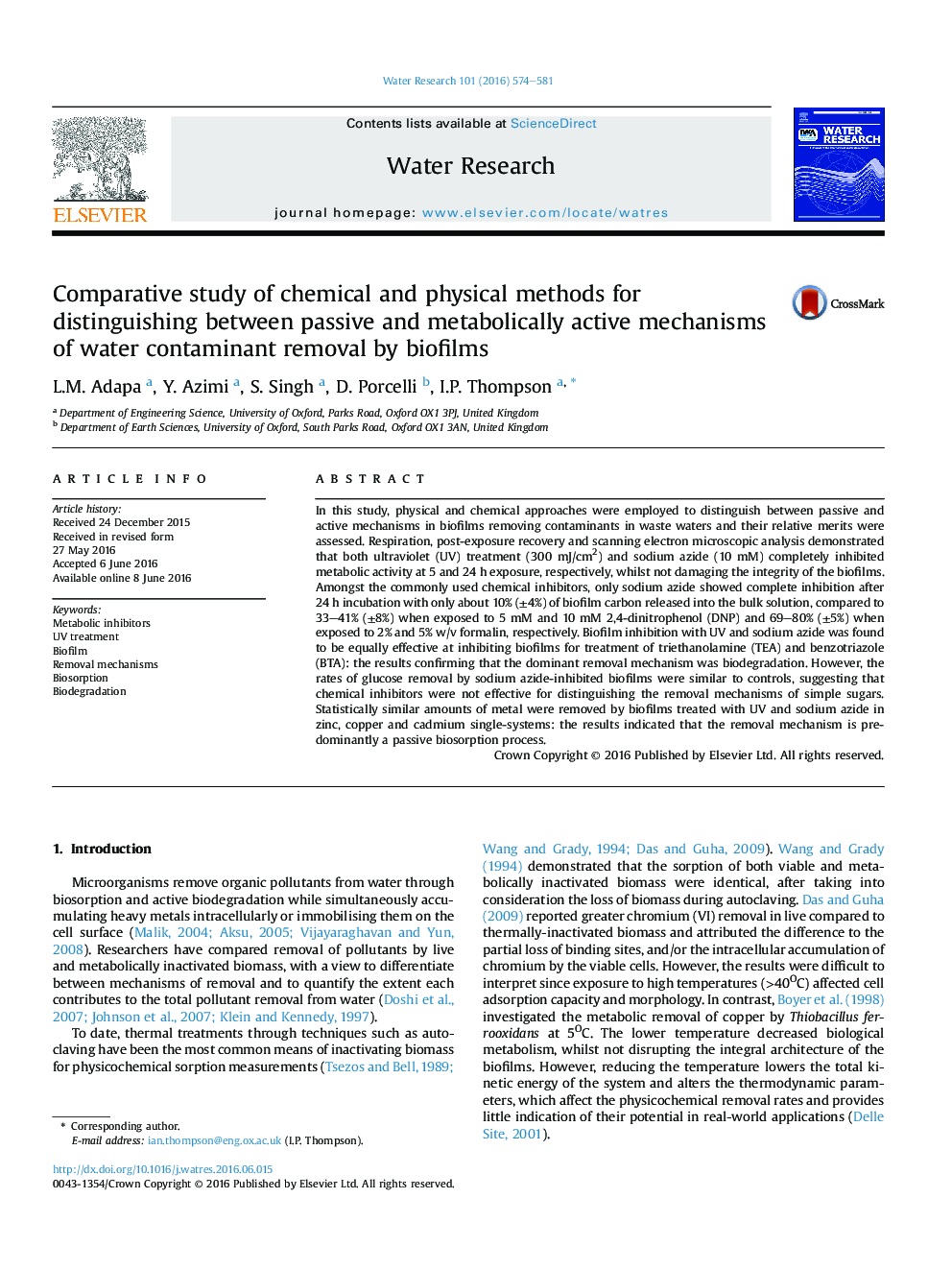| کد مقاله | کد نشریه | سال انتشار | مقاله انگلیسی | نسخه تمام متن |
|---|---|---|---|---|
| 6364918 | 1623067 | 2016 | 8 صفحه PDF | دانلود رایگان |
- UV treatment is introduced as an effective alternative to metabolic inhibitors.
- Metabolic inhibition with UV preserves the structural integrity of biofilms.
- UV irreversibly halts glucose biodegradation, chemical inhibitors don't.
- Biodegradation and biosorption were dominant mechanism of organic and metal removal, respectively.
In this study, physical and chemical approaches were employed to distinguish between passive and active mechanisms in biofilms removing contaminants in waste waters and their relative merits were assessed. Respiration, post-exposure recovery and scanning electron microscopic analysis demonstrated that both ultraviolet (UV) treatment (300 mJ/cm2) and sodium azide (10 mM) completely inhibited metabolic activity at 5 and 24 h exposure, respectively, whilst not damaging the integrity of the biofilms. Amongst the commonly used chemical inhibitors, only sodium azide showed complete inhibition after 24 h incubation with only about 10% (±4%) of biofilm carbon released into the bulk solution, compared to 33-41% (±8%) when exposed to 5 mM and 10 mM 2,4-dinitrophenol (DNP) and 69-80% (±5%) when exposed to 2% and 5% w/v formalin, respectively. Biofilm inhibition with UV and sodium azide was found to be equally effective at inhibiting biofilms for treatment of triethanolamine (TEA) and benzotriazole (BTA): the results confirming that the dominant removal mechanism was biodegradation. However, the rates of glucose removal by sodium azide-inhibited biofilms were similar to controls, suggesting that chemical inhibitors were not effective for distinguishing the removal mechanisms of simple sugars. Statistically similar amounts of metal were removed by biofilms treated with UV and sodium azide in zinc, copper and cadmium single-systems: the results indicated that the removal mechanism is predominantly a passive biosorption process.
215
Journal: Water Research - Volume 101, 15 September 2016, Pages 574-581
